Open-ended investment funds companies (OEICS) are a type of investment fund that varies in size and unites and pools together investor funds to invest in a diverse portfolio of shares and/or other assets such as bonds or property.You can use our comparison of what we think are the best accounts for buying and selling open-ended investment funds by dealing commission and ongoing account fees. In this guide, we have ranked and compared the best accounts for buying and selling open-ended investment funds in the UK.
Hargreaves Lansdown: Excellent OEIC research and analysis
Hargreaves Lansdown OEIC Investing Review
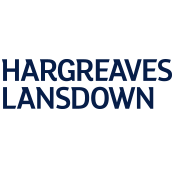
Name: Hargreaves Lansdown OEIC Investing
Description: Over 1.7 million people invest through HL and trust them to help them invest over £140bn. HL have been helping investors pick their own open ended investment companies since 1981.
Capital at risk.
Summary
There is no charge for buying and selling open-ended investment companies. Accounts are charged at 0.45% for the first £250,000. Then 0.25% up to £1m, 0.1% up to £2m. There is no charge above £2m.
Pros
- £1 minimum deposit
- Account fees from 0.45%*
Cons
- No cap on fund fees
-
Pricing
(4)
-
Market Access
(4)
-
Online Platform
(4)
-
Customer Service
(4)
-
Research & Analysis
(4)
Overall
4Capital at risk
Interactive Investor: Fixed-fee OEIC investing
Interactive Investor OEIC Investing Review
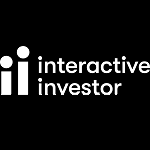
Name: Interactive Investor OEIC Investing
Description: Interactive Investor charge a low, flat fee of £9.99 per month for investing in open-ended investment companies. This covers OEIC investing for Stocks and Shares ISA, Junior ISA and Trading Account (you can also add a SIPP for an extra £10 per month).
Capital at risk.
Summary
*Open-ended investment company dealing commissions are a free trade every month, then charged £7.99 or upgrade to a £19.99 “Super Investor” account 2 free monthly trades and deal for £3.99. Regular investing is free.
Pros
- Fixed account fee of £9.99*
- £1 minimum deposit
Cons
- Fixed fee not great for very small accounts
-
Pricing
(4.5)
-
Market Access
(4)
-
Online Platform
(4)
-
Customer Service
(4)
-
Research & Analysis
(4)
Overall
4.1Capital at risk
AJ Bell: Best for low-cost OEIC investing
AJ Bell OEIC Investing Review
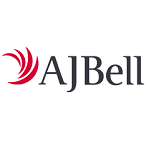
Summary
*Open-ended investment company investing account fees reduce to 0.10% on the value between £250,000 and £500,000. There is no charge above £500,000. Dealing costs are £1.50.
Pros
- Low account fee of 0.25%*
- Wide range of index funds
Cons
- High initial deposit of £500
-
Pricing
(4)
-
Market Access
(4.5)
-
Online Platform
(4)
-
Customer Service
(4)
-
Research & Analysis
(4)
Overall
4.1Capital at risk
Bestinvest: Best for OEIC investing advice
Bestinvest OEIC Investing Review
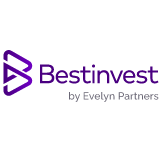
Name: Bestinvest OEIC Investing
Description: Bestinvest has combined low-cost online investing and share dealing with personalised expert advice to help clients choose the right open-ended investment companies for their portfolio.
Capital at risk.
Summary
For open-ended investment company investing Bestinvest’s account fee is 0.4% up to £250k. This reduces to 0.2% after £250k.
Pros
- £1 minimum investment
- Advice from experts on demand
Cons
- Limited market range
-
Pricing
(4)
-
Market Access
(4)
-
Online Platform
(4)
-
Customer Service
(4)
-
Research & Analysis
(4)
Overall
4Capital at risk
❓ Methodology: We have chosen what we think are the best open-ended investment fund accounts based on:
- over 17,000 votes in our annual awards
- our own experiences testing the open-ended investment fund accounts with real money
- an in-depth comparison of the features that make them stand out compared to alternative open-ended investment fund accounts.
- interviews with the open-ended investment fund account CEOs and senior management
Compare OEIC Investing Platforms
| OEIC Platform | Dealing Commission | Fund Account Fee | GMG Rating | More Info |
|---|---|---|---|---|
 | £7.99 | £9.99pm | Visit Platform Capital at Risk |
|
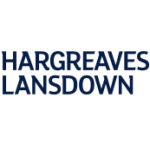 | £0 | 0.45% – 0.1% | Visit Platform Capital at Risk |
|
 | £1.50 | 0.25% – 0.1% | Visit Platform Capital at Risk |
|
 | £0 | 0.4% – 0.1% | Visit Platform Capital at Risk |
How to invest in open-ended investment companies?
To invest in an open-ended investment company you need an OEIC investment platform. In this guide we will explain what open-ended investment companies are, how they work, how you can pick the best ones and highlight where you can buy them.
What is an open-ended investment fund?
An open-ended fund is an investment product that investors can buy or sell units of. As the largest and most popular type of investment fund open to private investors, you really are spoilt for choice when it comes to choosing an open-ended fund. Morningstar UK lists more than 58,000 different fund units on its website[1].
Fortunately, this disguises the fact that many funds have more than one type of unit. Many funds, for example, offer both income units and accumulation units (in which the income is automatically reinvested rather than paid out to the investors).
Most funds also have one group of units for private investors and another (invariably much cheaper) for institutional investors, such as pension funds and insurance companies, which get a better price because they invest much larger sums – millions rather than hundreds of pounds – at a time. You also can buy units in a number of different currencies, including pounds, euros and dollars.
Narrowing the choice of open-ended funds
Strip out these differences and a private UK investor looking to make a sterling investment of say £1,000 will have a choice of around 3,000 funds, which is still a large number. Around two-thirds of these will offer income units as well as accumulation units.
The largest group will invest solely in equities, with the remainder divided between fixed-income funds, funds that invest in a mixture of asset classes and some more specialist types, including property.
Just to confuse things more, every year scores of funds are either closed down (usually because of poor performance) or merged with another existing fund. New funds are also being launched all the time to replace them or meet the latest investment fad.
Over periods of five years as many as a third of the funds available at the outset will disappear for one reason or another. This creates what professionals call survivorship bias in performance records, flattering those that remain, as only those funds which have survived are included in the up to date statistics.
Where should you start looking for an open-ended investment fund?
One good way to get a flavour for what is available is to go the website of the Investment Association, the funds business trade body, and find its statistics section. Then go to its full figures page and choose the latest monthly set of tables.
Flipping through these will give you an idea of how much money is invested in funds overall (£121bn at 31 May 2019), and how this breaks down by type of investment (equities, bonds, property and so on), by type of fund (separating out tracker funds, for instance), by distribution channel (including how much is sold directly to individuals and through a platform) and the pattern of recent and historic sales (which, you should note, can change markedly from period to period).
A separate link on the statistics section, called monthly company rankings, will give you a picture of which companies have the most number of funds and the most amounts of money under management. This is further broken down into funds sold to retail investors (individuals) and to institutional investors.
These, for example, were thetop 10 providers of retail funds at 31 May 2019. Each of these firms will tend to have different specialities. It is worth noting how many firms are involved in providing funds. It is a reasonably competitive business, but one in which a relatively small number of funds with above-average track records tend to scoop most of the money in any one year.
And after that?
A second useful step is to look more closely at the categories into which the trade body classifies funds. These are helpful, at least up to a point. There are 30 different categories in all. You can find the full list here, with their definitions. Alternatively you can look a simple schematic that breaks them down into broader groups – the main ones are equity, fixed income and property.
The diagram also differentiates between sectors which aim to capture the returns of a specific type of investment (e.g equity income, or global emerging markets) and a smaller, newer minority which include funds that aim for specific outcomes, such as an absolute return or a specific volatility target.
The thing to keep in mind here is that, while there are some mixed asset and flexible investment funds which are designed to provide a one-stop diversified solution for all your money, most funds are essentially building blocks that you will use to create a larger diversified portfolio.
You can only build that portfolio effectively if you have a clear idea of
- what your objectives are (e.g whether primarily income or primarily capital growth),
- the level of risk you are willing to tolerate,
- (the amount of time you can afford to leave your money invested (the longer the better) and
- the buying and running cost of the funds you choose.
Above all you need to be sure that the fund you choose will do what you want it to do.
Choosing the best open-ended investment funds?
The simplest way, but also one of the more dangerous, is to look at the past performance of different funds and pick those with the best track records.
All funds are required to publish their current asset values at regular intervals, which most do daily.
They also have to provide a monthly factsheet with further information, including their recent performance record, a list of the ten largest investments, the size of the fund and its ongoing charge ratio (a measure of the cost of ownership) in.
It is therefore relatively simple to compare the performance of funds over different periods of time. These days there are a whole host of websites that allow you to study and compare the performance of both fund sectors and the funds within them.
Most of these sites are free to use, although in some cases more detailed analysis may require a subscription.
These are some of the most popular research sites that offer performance data:
- Morningstar
- Citywire
- FE Trustnet
- Financial Times
Where can I buy open-ended investment funds?
Most large investment platforms also publish some or all of this data as part of their service to investors.
Here are some examples:
The more sophisticated sites allow you to look at “risk-adjusted” performance, meaning the return a fund has made relative to the volatility of that return, used in this case as a proxy for risk[2].
As well as performance data, many of these sites also allow you to filter their database to isolate funds which have a particular set of characteristics you have set. So you might for example look for those global equity funds which have a ten-year history, an ongoing charge ratio below 1.5%, a good fund manager rating and a relatively low level of volatility.
By changing the filters you can rapidly reduce the number of funds that meet this criteria to a small number and can compare the returns and other data for those funds.
On most sites you can also create charts showing how the fund has performed over different time periods. Morningstar is well known for providing style analysis of funds, placing funds into a nine-box matrix (based on the kind of shares they invest in).
Is that all there is to picking open-ended funds?
Sadly no. There is a reason why the regulators insist that all marketing material for funds incudes the message “past performance is no guide to the future”.
The success of a top performing fund may be down to any number of reasons, some of which may well not repeat. The conditions in which a fund does well during one period may not persist in the future. The manager of the fund may move on, be fired or replaced.
The investment style of a fund manager can go out of favour. The earlier performance may just be down to luck. And so on.
Although funds would like you to believe that they will continue to outperform their chosen benchmark, the evidence is clear that only a minority will do so over periods of five years or more.
Even then, proving that a fund which does well has done so because of superior skill is very difficult. There are some that do, but they are a small minority. Standard & Poor’s provides a useful twice-yearly service which shows how many funds are successful in beating their benchmarks and how persistent that outperformance is – in Europe about 70% of equity funds typically underperform[3].
The number which do so consistently over many years is little different to what you would expect if it was all determined by chance – a sobering conclusion.
Should I give up on actively managed funds altogether?
Not necessarily. It is a matter of choice. As long as you aware what the odds of finding the best actively managed funds are, there is nothing to stop you trying, but you do also need to ask yourself whether you have the right skills and knowledge to do so. What is undeniable that if you are able to find the best performing funds, the results can be exceptionally good.
Over the last five years, for example, two popular global equity funds, Fundsmith and Lindsell Train, have both turned an initial investment of £10,000 into more than £28,000, way ahead of the £17,000 achieved by the average fund in the global sector[4]. The same pattern – some funds with exceptional returns, but a minority average at best – is also true of several other sectors.
The managers of the two top performing global equity funds, Terry Smith and Nick Train, both follow a similar investment style, which has proved particularly successful in the economic conditions that have prevailed since the global financial crisis (low inflation, low interest rates and low economic growth).
There is no guarantee that those conditions will persist in the future, or that the outperformance will continue. The type of fund that will lead the performance tables can – and does – change markedly from year to year. Yet the lure of finding the consistently outperforming fund is what keeps billions of pounds flowing into fund industry coffers every year.
What else do you need to know about open-ended funds?
One of the principal reasons why actively managed funds as a group underperform a comparable index is that the cost of running funds acts as a significant drag on performance.
These costs are passed on to the investors as an annual charge, typically expressed as a percentage of the amount you have invested. Every 1% per annum you pay to own an actively managed fund offsets any advantage you might gain from the manager’s professional expertise, and the cost compounds over time.
Even the best fund managers rarely outperform by more than 2%-3% before charging their fees, so costs takes a big chunk of any edge they may have. It is important to note that the total cost to the investor of owning a fund includes other charges besides the annual management fee. Look out for the Ongoing Charge Figure (OCF) which gives a better, but still not perfect, approximation of the real all-in cost.
The good news however is that the cost of owning funds is finally coming down. The end of the widespread practice of paying an annual repeating commission to intermediaries for the funds they recommend to clients, a long running scandal, is one factor.
Increasing competition from lower cost passive funds is also pushing in the same direction. The average OCF of open-ended funds is now similar to that of investment trusts, traditionally a cheaper option.
The survey commissioned by the Association of Investment Companies about the availability of funds and cost of holding funds and investment trusts on the biggest investment platforms is an invaluable guide to the availability and cost of fund ownership, including actively managed funds.
Note that if you use a platform to hold a fund for you, you will pay something for that on top of the fund’s own charges.
Are there any shortcuts that can help find the best open-ended funds?
Yes, some, but again none that are perfect. One useful tip is to look at the funds which professional fund investors whose job is to choose other funds are favouring. You can piggyback to some extent on the research that they have done before selecting funds for their own investments.
A firm called Fundscape usefully analyses the performance of what it calls “gatekeepers”, firms who choose or recommend funds, while also identifying that fund research is a largely unregulated business in which there are many potential conflicts of interest.
Be particularly careful about using rating systems as a shortcut. Lots of research firms offer ratings. Most of them rely to varying degrees on past performance, with all the faults which that entails, and many of them take money from the fund companies directly or indirectly, which you may think compromises their integrity.
There is some evidence however that they can at least help keep you out of the worst funds. According to the Financial Conduct Authority, the City regulator, best buy lists offered by platforms and brokers may have some limited positive value.
Another important thing to do is to read more deeply about the ins and outs of fund investing. I offer a list of books that will help you on your way at the end of this piece. The serious national newspapers and some specialist magazines write a lot about funds.
Citywire and Trustnet offer ratings of fund managers rather than funds, meaning that you can track how the managers have performed over the whole of their career, not just in their present jobs. It is also worth making the effort to meet and talk to managers of funds if you have an opportunity. Many funds now take a more active role in talking about their funds through videos.
Some investor websites have forums in which you can compare notes with other fund investors.
What are the biggest mistakes investors tend to make with open-ended funds?
Probably the biggest mistake is following the herd and buying funds purely because they have done well in the past. In the run up to the Internet bubble in 1999-2000, investors piled into technology funds and got badly burnt when they crashed. The recent travails of Woodford Investment Management are another cautionary tale.
When Neil Woodford worked for Invesco Perpetual, he built a reputation as an outstanding manager of mainstream UK equity funds. In 2013 he left to set up his own firm and branched out into unquoted and illiquid early stage technology companies.
In 2019, despite being backed by many fund promoters, his fund was suspended after a run of poor performance meant it was unable to meet all the redemption requests from investors, many of whom had bought the new fund while being unaware that the risk profile of their fund had changed with the shift in strategy.
So what is the best advice an investor can have on open-ended funds?
First and foremost, be realistic. If you don’t think you have the skills to determine which actively managed funds are likely to do well, then it is probably not worth trying, as the risks of failing are high.
You may still do well with an indifferent fund, in the sense that you make more money than you would by leaving your money in the bank, but you can almost certainly do better by investing instead in one or more index funds as an alternative.
A more sensible strategy is to start slowly, pick one or two actively managed funds, track their progress (not just the returns, but the volatility and especially the costs) and see how they do relative to your expectations and their peer group – find out if you have what it takes to pick your own funds. Learn from experience.
The more homework you can do the luckier you are likely to be. It is particularly important to see how your funds perform in different market conditions.
Don’t forget, finally, that the main advantage of owning a fund, rather than investing directly yourself, is the simplicity and convenience. Over time, given sensible diversification, it is better to have money at work in the financial markets than not to invest at all.
Only by investing can you hope to build worthwhile amounts of capital for a home, your retirement, school fees or some other life ambition. But remember: simple to own does not mean simple to choose.
Further reading on open-ended funds:
- The Elements of Investing, by Charles Ellis and Burton Malkiel
- Bogle on Mutual Funds, by Jack Bogle
- Fundology, by John Chatfeild Roberts
- Asset Management Market Study (FCA final report)
[1] For convenience, and to distinguish them from investment trusts, I describe what you can buy and sell in an open-ended fund (whether a unit trust or Open Ended Investment Company, known as an OEICs) as units, even though this may not always be the correct technical term.
[2] Volatility, or standard deviation in mathematical terms, is a proxy for risk – better than nothing, but imperfect.
[3] In 2018 it was 80%.
[4] Source: FE Trustnet, July 2019
⚠️ FCA Regulation
All OEIC investing platforms that operate in the UK must be regulated by the FCA. The FCA is the Financial Conduct Authority and is responsible for ensuring that UK open-ended investment trust brokers are properly capitalised, treat customers fairly and have sufficient compliance systems in place. We only feature open-ended-investment company platforms that are regulated by the FCA, where your funds are protected by the FSCS.

Richard Berry
This article contains affiliate links which may earn us some form of income if you go on to open an account. However, if you would rather visit the open-ended fund investment platform via a non-affiliate link, you can view the product pages directly here:

